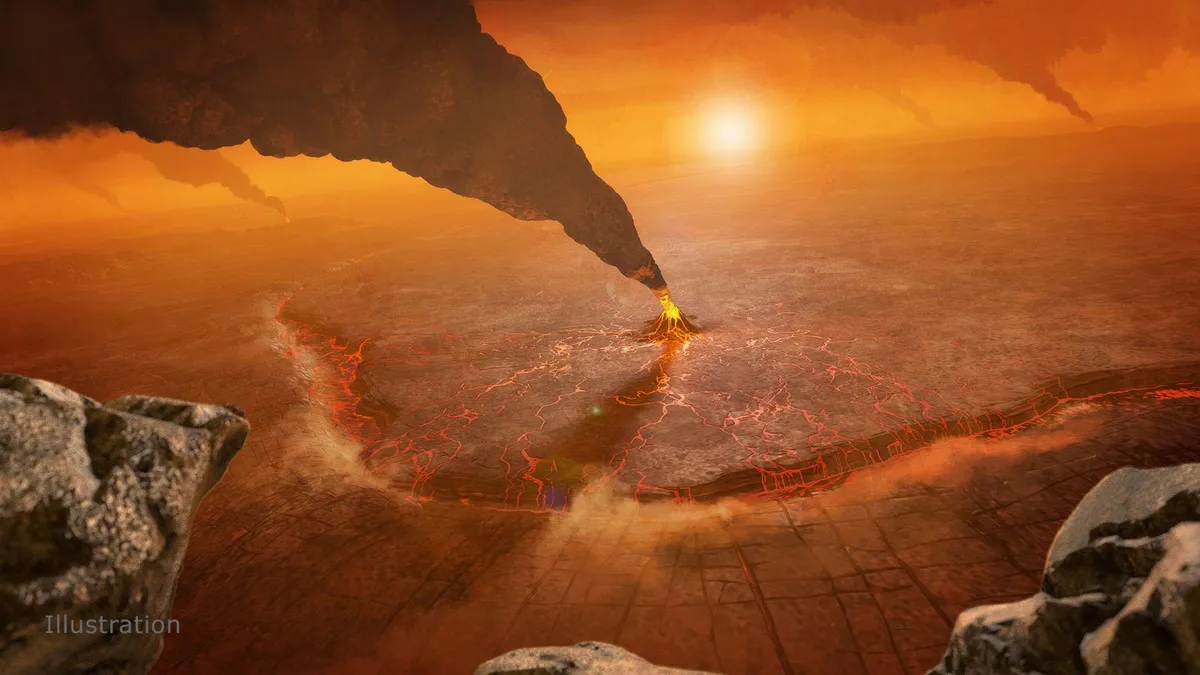
Recent studies reveal compelling evidence that Venus may still be geologically alive, as massive circular features on its surface suggest that hot plumes are stirring deep beneath its crust. This fascinating discovery is based on data collected over 30 years ago by NASA’s Magellan spacecraft, which has provided valuable insights into the planet's geological activity.
Unlike Earth, where giant plates of crust shift and recycle through a process known as plate tectonics, Venus operates under a different mechanism. Despite the absence of moving plates, its surface is continuously reshaped, likely due to molten rock rising from deep within the planet. This ongoing geological activity raises intriguing questions about what drives these processes.
To delve deeper into the geological activity of Venus, scientists have focused on mysterious structures known as coronae. These massive, oval-shaped formations can span hundreds of miles and are believed to form when hot, buoyant material from Venus’ interior pushes upward, distorting the surface. Surrounding each corona are systems of fractures that indicate powerful forces at play beneath the surface. Researchers have identified hundreds of these intriguing features across the planet.
A study published in Science Advances presents fresh evidence that many coronae on Venus are likely still being shaped by underground forces. The research draws upon data from NASA’s Magellan mission, which orbited Venus in the early 1990s, providing the most detailed maps of its surface and gravity field to date. According to the study’s lead author, Gael Cascioli, an assistant research scientist at the University of Maryland, Baltimore County, and NASA’s Goddard Space Flight Center, “Coronae are not found on Earth today; however, they may have existed when our planet was young and before plate tectonics had been established.”
As part of NASA’s upcoming VERITAS (Venus Emissivity, Radio science, InSAR, Topography, and Spectroscopy) mission, Cascioli and his team are particularly interested in the high-resolution gravity data that the spacecraft will provide. Co-author Erwan Mazarico, also at Goddard, will co-lead the VERITAS gravity experiment, set to launch no earlier than 2031.
Managed by NASA’s Jet Propulsion Laboratory in Southern California, the Magellan spacecraft used its radar system to penetrate Venus’ thick atmosphere and map the topography of its mountains and plains. Among the various geological features documented, coronae have remained particularly enigmatic. Scientists have observed these features in regions where the planet's lithosphere is thin and heat flow is high. According to co-author Anna Gülcher, an Earth and planetary scientist at the University of Bern in Switzerland, “The most exciting thing for our study is that we can now say there are most likely various and ongoing active processes driving their formation.”
The researchers employed advanced 3D geodynamic models to explore different formation scenarios for plume-induced coronae, comparing their findings with the combined gravity and topography data from Magellan. The gravity data proved essential in detecting less dense, hot, and buoyant plumes beneath the surface, information that could not be discerned from topography data alone. Out of the 75 coronae studied, 52 appear to possess buoyant mantle material beneath them, likely driving tectonic processes.
One significant process identified is subduction, which occurs on Earth when one tectonic plate is driven beneath another. While this process generates earthquakes and recycles old rock material back to the surface through volcanic vents, Venus appears to experience a different form of subduction around the edges of some coronae. In this case, as a buoyant plume of hot rock ascends from the mantle, surface material rises and spreads outward, colliding with adjacent material and pushing it downward into the mantle.
Additionally, another tectonic process known as lithospheric dripping may occur, where dense, cooler material sinks from the lithosphere into the hot mantle. The researchers also identified possible instances of a third process where a plume of molten rock beneath a thicker part of the lithosphere drives volcanism above it.
This recent research illustrates a trend of scientists revisiting the Magellan data, revealing that the geological processes on Venus may be more similar to those on Earth than previously thought. Recent observations have even spotted erupting volcanoes and extensive lava flows venting from prominent features like Maat Mons, Sif Mons, and Eistla Regio through radar images from the orbiter.
While these images provide direct evidence of volcanic activity, the authors of the new study emphasize the need for sharper resolution to comprehensively understand the tectonic processes driving corona formation. According to co-author Suzanne Smrekar, a planetary scientist at JPL and principal investigator for VERITAS, “The VERITAS gravity maps of Venus will boost the resolution by at least a factor of two to four, potentially revolutionizing our understanding of Venus’ geology and its implications for early Earth.”
The VERITAS mission represents NASA’s ambitious effort to unveil the hidden geological secrets of Venus. Managed by the Jet Propulsion Laboratory, VERITAS aims to transform our understanding of Earth’s sister planet by investigating its surface composition, topography, and internal structure in unprecedented detail. The spacecraft will utilize synthetic aperture radar to create high-resolution 3D global maps of Venus, enabling scientists to detect surface features and ongoing tectonic activity across the planet.
Additionally, a near-infrared spectrometer will analyze the surface chemistry to identify different rock types and active volcanic regions. VERITAS will also employ a radio tracking system to measure Venus’ gravitational field, facilitating a deeper exploration of the planet’s internal structure from crust to core. With a launch date set for no earlier than 2031, the VERITAS mission promises to deliver the most comprehensive insights into Venus since the Magellan mission, aiding in our understanding of how rocky planets evolve, including our own Earth.